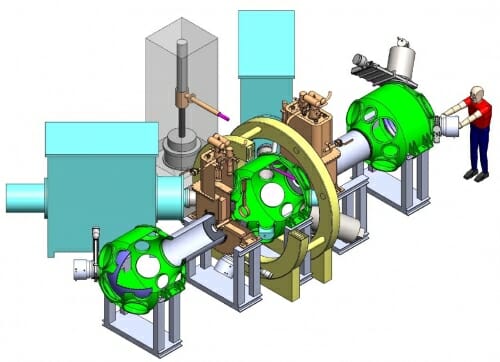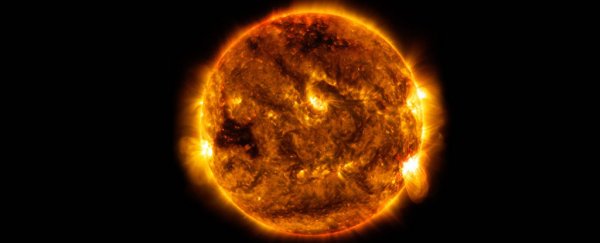Our planet is constantly bathed in the winds coming off the blistering sphere at the centre of our Solar System. But even though the Sun itself is so ridiculously hot, once the solar winds reach Earth, they are hotter than they should be - and we might finally know why.
We know that particles making up the plasma of the Sun's heliosphere cool as they spread out. The problem is that they seem to take their sweet time doing so, dropping in temperature far slower than models predict.
"People have been studying the solar wind since its discovery in 1959, but there are many important properties of this plasma which are still not well understood," says physicist Stas Boldyrev from the University of Wisconsin–Madison.
"Initially, researchers thought the solar wind has to cool down very rapidly as it expands from the Sun, but satellite measurements show that as it reaches the Earth, its temperature is 10 times larger than expected."
The research team used laboratory equipment to study moving plasma, and now think the answer to the problem lies in a trapped sea of electrons that just can't seem to escape the Sun's grip.
The expansion process itself has long been assumed to be subject to adiabatic laws, a term that simply means heat energy isn't added or removed from a system. This keeps the numbers nice and simple, but assumes there aren't places where energy slips in or out of the flow of particles.
Unfortunately, an electron's journey is anything but simple, shoved around at the mercy of vast magnetic fields like a roller coaster from Hell. This chaos leaves plenty of opportunity for heat to be passed back and forth.
Just to complicate matters further, thanks to its tiny mass, electrons get a good head start over heavier ions as they shoot forth from the Sun's atmosphere, leaving a largely positive cloud of particles in their wake.
Eventually the growing attraction between the two opposing charges takes over the inertia of those flying electrons, pulling them back to the starting line where magnetic fields once again play havoc with their paths.
"Such returning electrons are reflected so that they stream away from the Sun, but again they cannot escape because of the attractive electric force of the Sun," says Boldyrev.
"So, their destiny is to bounce back and forth, creating a large population of so-called trapped electrons."
Boldyrev and his crew recognised a similar game of electron ping-pong playing out in their own laboratory, inside an apparatus commonly used to study plasma called a mirror machine.
 A linear fusion reactor, or 'mirror machine'. (Cary Forest)
A linear fusion reactor, or 'mirror machine'. (Cary Forest)
Mirror machines don't actually contain any mirrors. At least, not the familiar shiny kind. Also known as magnetic mirrors or magnetic traps, these linear fusion devices are little more than long tubes with a bottle-neck at either end.
Their reflective nature is created as streams of plasma passing through the bottle pinch in at either end, altering the surrounding magnetic fields in such a way that particles within the stream reflect back inside again.
"But some particles can escape, and when they do, they stream along expanding magnetic field lines outside the bottle," Boldyrev says.
"Because the physicists want to keep this plasma very hot, they want to figure out how the temperature of the electrons that escape the bottle declines outside this opening."
Or if you're Boldyrev and his team, those leaking electrons can be studied to better understand what's happening with our very own solar wind.
He and his colleagues suggest the population of trapped electrons that yo-yo back and forth play a major role in the way electrons distribute their heat energy, changing the typical distributions of particle velocities and temperatures in predictable ways.
"It turns out that our results agree very well with measurements of the temperature profile of the solar wind and they may explain why the electron temperature declines with the distance so slowly," says Boldyrev.
Finding such a good match between the mirror machine's figures and what we see in space suggests there could be other solar phenomena worth studying this way.
This research was published in PNAS.
